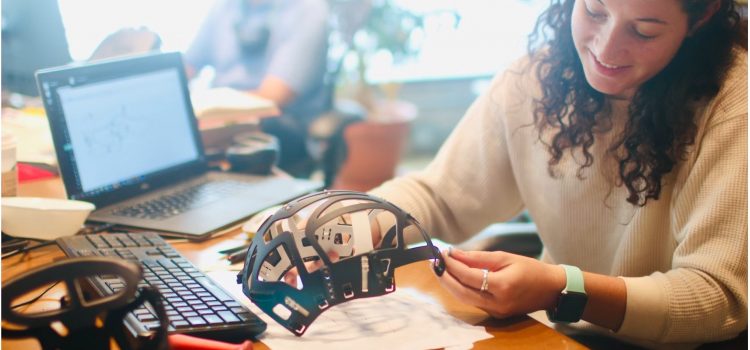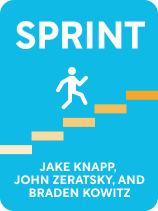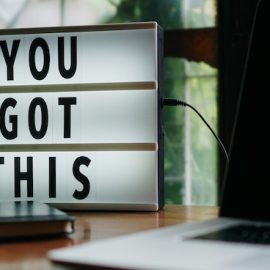

This article is an excerpt from the Shortform book guide to "Sprint" by Jake Knapp, John Zeratsky, and Braden Kowitz. Shortform has the world's best summaries and analyses of books you should be reading.
Like this article? Sign up for a free trial here.
Want a prototype test example? How can you test a product prototype using the Design Sprint method?
In his bestselling book Sprint, Jake Knapp provides a step-by-step process for completing your own Design Sprint workshop. According to Knapp, the final day of your workshop should be dedicated to prototype testing, and Sprint provides an example of how to test your prototype in three steps.
Read on for a step-by-step example of prototype testing, according to Knapp’s Design Sprint method.
Example of Design Sprint Prototype Testing
On the last day of your sprint workshop, Jake Knapp’s Design Sprint method instructs you to test your prototype by conducting one-on-one interviews with five customers, giving you enough feedback to understand where to take your product next. This article will detail a prototype testing example, based on the advice from Jake Knapp, John Zeratsky, and Brian Kowitz in the bestselling book Sprint.
Step 1: Set the Stage
According to the prototype testing example in Sprint, you can identify the majority of problems with a product through just five customer interviews. This means they can all be done on the same day. You’ll start at 9:00 am on Friday (the final day of your sprint workshop), and each interview will be an hour long with a half-hour break in between. The person acting as the interviewer will be in one room with the customers and the prototype.
Knapp, Zeratsky, and Kowitz recommend beginning the selection process for your prototype testing interviewees early in the week. Use a survey to narrow down to five customers. Create survey questions that help you identify the traits you’re looking for in your ideal customer. If you’re looking for people who are already familiar with your company or people who live in a certain geographic area, for example, write survey questions that collect that information. You can entice your customers with incentives, such as Amazon gift cards.
(Shortform note: It may be tempting to jump from one interview to another without taking the full half-hour break in between, but you should use that time to your advantage. Planning breaks in your schedule gives you some padding in case an interview goes over time or the next customer is late. It also gives you some much-needed time to rest and reflect on what you’ve just learned. You can write down a few takeaways if you have key points you want to remember later.)
You’ll need to set up a webcam with video and sound that captures the customers’ reactions, as the rest of the team will be watching the interviews live in the sprint room. (Confirm that the customer is comfortable being recorded and have them sign any necessary legal documents before you proceed.)
(Shortform note: The authors’ methods are designed for in-person customer interviews, but you could adapt their process to suit remote interviews as well, especially if your product is digital. For example, if you’re unable to be in the same room as your customers, there are a number of video conferencing programs you can use to set up your prototype testing. You can use your chosen software’s features to record each interview live. However, be aware that you’ll have a few added steps during set-up—it’ll be especially important for you to make sure that all of your technology is working and that you understand how to use your software of choice before you begin.)
Engage the customer in small talk to build rapport before gradually beginning to ask questions that tell you how the customer might use your product in their everyday life. For example, the interviewer for the bookstore team might begin by asking a customer about their job or their hobbies and interests. Then, they could start to ask about the customer’s reading habits and experiences with book buying. How do they typically choose their next read? How often do they speak to bookstore employees? Have they ever used an online recommendation service to find books before?
| Build Rapport With the Customer Using Active Listening If customers are hesitant or uncomfortable during your prototype testing interviews, the quality of the feedback you get from them will suffer. As the authors suggest, it’s therefore important to build rapport with the customer at the beginning of the interview process. For example, engaging in active listening is an effective way to strengthen the rapport with customers. A common active listening technique you could use with your customers is to repeat their responses back to them. When you do this, you’re showing them that you care about, and have internalized, what they’re saying. This will help build trust and respect with the customer, increasing the likelihood that they’ll share honest feedback later on. Repeating responses back to the customer can also help you to clarify their meaning. The method naturally prompts further discussion: If your repeated interpretation of what they said is correct, the customer may expand on their answer. At the very least, they will feel understood. If your interpretation is inaccurate, your response will prompt them to explain further. |
Step 2: Begin Testing the Prototype
Next, the interviewer should introduce the prototype and encourage the customer to begin using it. Knapp, Zeratsky, and Kowitz advise that you don’t tell the customer exactly how to use the prototype—leave them to figure it out for themselves. This will help you see if the product is naturally easy to use or if it has unexpected problems.
(Shortform note: Allowing your customer to explore the product for themselves can also lead to unexpected innovations. According to Marty Cagan, if they’re allowed to explore, customers might use your product in a way you didn’t plan for, revealing a new opportunity for you to expand your market. For example, eBay started as an online marketplace for collectibles and electronics, but soon, people frequently used it to sell larger items like cars. eBay was then able to adapt its service to fit customer demand. This advice may not work if you have a very targeted use for your product, but it’s something to consider as you test your prototype on Friday.)
As they use the prototype, you can also ask the customer questions about their opinion of different product features, what they think will happen next in the sequence, and what they imagine the purpose of different features will be. After the customer has tested the prototype, have a short discussion with them about what worked, what didn’t, and what they’d change. This is your chance to understand their overall impressions.
(Shortform note: This interview technique demonstrates to the customer that their point of view is important to you. Asking for a customer’s opinion about your product can also be a successful sales technique. Instead of telling your customer that your product is better than a competitor’s (which can put people in a position of defending their current choices), politely ask them to offer their feedback on whatever you’re selling. Play to their expertise—if you’re selling medical supplies to a doctor, emphasize that you’re seeking their opinion because of their experience in the medical field, for example. If your product is truly the superior option, your customer will be more willing to recognize that—and ultimately buy your product—when they’ve been treated with expert status.)
The rest of the team should watch the interviews together in the sprint room. To prepare, draw a grid on a whiteboard with a column for every interviewee and a row for each important component of the prototype. Silently write down quotes from the customers that seem like significant observations and interesting customer reactions on sticky notes. Label them positive, neutral, or negative. As you write your sticky notes, place them in the appropriate boxes on the grid based on the component they refer to.
(Shortform note: The authors advise you to write down important ideas the customers bring up while you’re watching the interviews, but they don’t expand on what “important” actually means. There are a few things you can look out for as you listen. Write down when a customer suggests a feature they think would make the product better—this could help spark ideas for future iterations. Likewise, make a note every time a customer gets confused, so you know which parts of the product require adjustment. Finally, write down any observation that makes you consider your product in a new way or gives you information that helps to answer the questions you wrote at the beginning of your sprint.)
Step 3: Review Your Results
The authors instruct you to silently review the notes on the whiteboard after the prototype testing interviews, looking for patterns in the feedback. For example: Did several customers comment positively on the same feature? Did several customers struggle during the same step? You can use these patterns to identify places that need improvement or features that worked particularly well.
Then, assess your findings by looking back at your sprint questions and your goal. Did you learn what you were hoping to? If not, what are your next steps? Even if your prototype was a success, the sprint probably still revealed flaws you need to address. Now you have the information you need to do that efficiently and effectively. If you still have questions you want to answer about your product after Friday, or you’re not sure where to take it next, you can always run another sprint. Whatever your results, no sprint is ever a waste of time.
| Decide Where to Take Your Product Next In The Lean Startup, Eric Ries discusses the outcomes that often arise after collecting customer data. Like Knapp, Zeratsky, and Kowitz, he offers two possibilities: You can carry out another iterative cycle to improve your product based on the weaknesses you identified, or you can decide to “pivot” away from your current direction entirely. If your product turns out to be too problematic to fix, Ries offers a few ways to move forward. First, you can alter your product so it focuses entirely on one feature the customers liked. Alternatively, you can choose to focus on a different need that the customer has, which will likely require you to design a new product. Finally, you can stick with the same customer problem but try to solve it with a different type of product. |

———End of Preview———
Like what you just read? Read the rest of the world's best book summary and analysis of Jake Knapp, John Zeratsky, and Braden Kowitz's "Sprint" at Shortform.
Here's what you'll find in our full Sprint summary:
- How to build and test a prototype in just a five-day work week
- The step-by-step processes for planning and completing a sprint
- How to conduct one-on-one interviews with your customers






